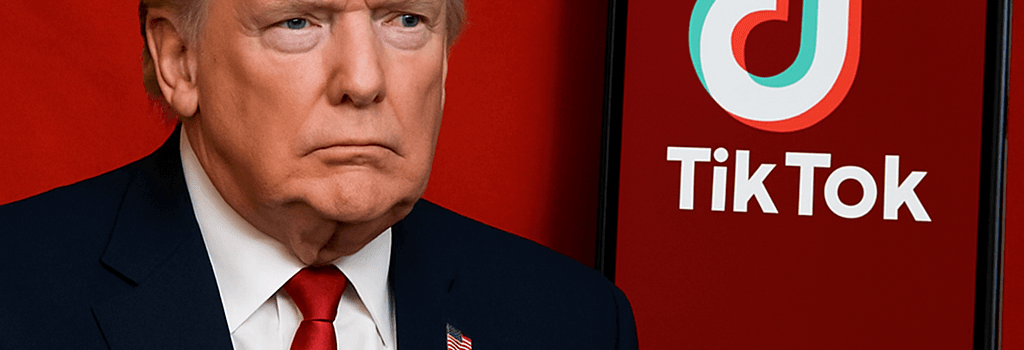Trump Delays TikTok Deal Amid Trade Tensions with China

The White House has confirmed that former President Donald Trump has granted a third 90-day extension to ByteDance for divesting TikTok’s U.S. assets, Reuters reported on June 18, 2025. With the clock reset just one day before the last deadline, ByteDance now faces a firm mid-September cutoff or the prospect of a forced shutdown of TikTok’s American operations.
TikTok Sale Enters Third Extension
Trump announced the extension aboard Air Force One, attributing further delay to China’s review process. “We’ll probably have to get China approval, but I think we’ll get it,” he told reporters. “I think President Xi will ultimately approve it.” This marks the third time Trump has postponed the sale deadline he initially set under a Supreme Court–backed bipartisan law designed to mitigate national security risks posed by China-based ByteDance.
Background: National Security and Legal Mandates
In December 2024, Congress passed legislation requiring ByteDance to divest TikTok within six months or face a U.S. ban, citing concerns that user data could be accessed covertly by the Chinese government. The Committee on Foreign Investment in the United States (CFIUS) invoked Section 721 of the Defense Production Act, compelling ByteDance to present a buyer headquartered in the U.S. or an allied nation. The Supreme Court upheld this mandate in January 2025, rejecting ByteDance’s challenge.
Technical Infrastructure and Data Security Concerns
At the heart of the debate are TikTok’s data flows and encryption architectures. ByteDance currently partitions U.S. user data into standalone databases hosted on Oracle Cloud Infrastructure in Virginia. Data at rest is encrypted with AES-256, and in transit with TLS 1.3. However, critics argue that ByteDance retains the root keys in its Chinese offices, potentially enabling remote access via hardware security modules (HSMs).
Expert View: Cloud Architect’s Perspective
“Unless the divestment includes a transfer of key management to a neutral third-party enclave, the risk of unauthorized access remains,”
— Jane Smith, Principal Cloud Architect at CloudSec Solutions
Geopolitical Leverage in the U.S.-China Trade War
Donald Trump initially sought to use the TikTok deal as a bargaining chip to secure tariff relief. In March, he proposed lowering Section 301 tariffs on $200 billion of Chinese goods in exchange for agreement on the sale. By April, analysts described the talks as “desperate” on the U.S. side and “advantageous” for China, which has little incentive to expedite divestiture.
Beijing has countered by setting its own leverage points, including a six-month cap on rare earth exports to U.S. carmakers and manufacturers. Rare earth elements such as neodymium and dysprosium are critical for electric vehicle motors and permanent magnets. Meanwhile, the U.S. Commerce Department has threatened new export controls on advanced lithography and deposition tools used in AI chip manufacturing, governed by the Export Administration Regulations (EAR).
Implications for AI Development
Trade restrictions on semiconductor equipment—from ASML’s EUV machines to Applied Materials’ atomic layer deposition (ALD) systems—could stall China’s progress on advanced AI accelerators. High-performance GPUs and tensor processors are vital for training large language models. A continuation of U.S.-led export controls would deepen China’s reliance on homegrown architectures such as the Loongson MIPS-derived CPUs and Canaan’s AI ASICs.
Legal and Legislative Outlook
Democratic lawmakers argue Trump lacks authority to prolong the sale beyond the statutory six-month window. Senator Mark Warner (D-VA) has introduced companion legislation to the RESTRICT Act, aiming to codify immediate divestiture without executive waivers. Legal scholars note that another extension could trigger judicial review under the Administrative Procedure Act, with the Supreme Court potentially asked to clarify executive power limits.
Market Impact and Business Disruption
- Economic analysts estimate U.S. businesses could lose over $1 billion in one month if TikTok is forced offline. Small and medium enterprises reliant on TikTok’s advertising API for customer acquisition face dire ROI shortfalls.
- Advertisers are already testing migrations to Instagram Reels and YouTube Shorts; e-commerce brands report CPC increases of 20–30% off-platform.
- Developers building on TikTok’s SDK and Creator Marketplace warn of layoffs if the uncertain legal environment persists beyond September.
Findings and Outlook
With the September deadline looming, China retains the upper hand. If no sale is consummated, TikTok may shut down U.S. operations, intensifying Congressional calls for immediate executive action. Meanwhile, the broader U.S.-China tech rivalry shows no signs of abating, as both sides wield rare earth exports and semiconductor controls as strategic levers.